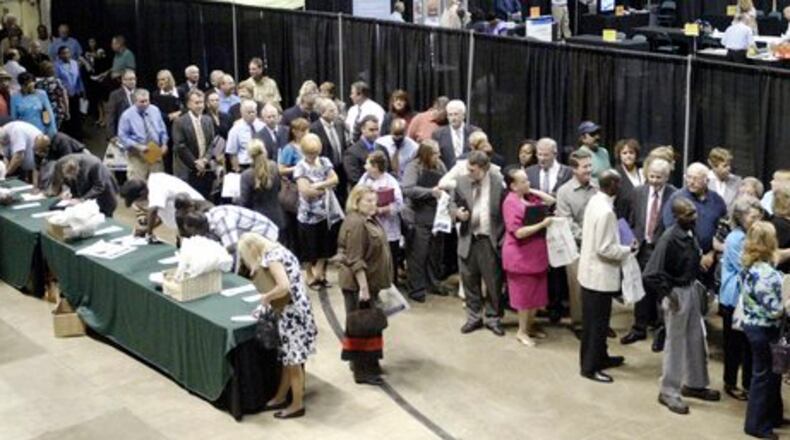Adults across the age spectrum dropped out of the labor force during the pandemic, but older adults were a disproportionate share of dropouts. More adults age 65 and older left the labor force in 2020 than in any year since the US began tracking such information in 1948, according to a Urban Institute analysis published in March of Bureau of Labor Statistics data.
Leaving the job market early can hurt people near and long term. They can lose years of pay, face reductions in Social Security benefits, or could have to draw down any savings or raid retirement funds early.
One of the barriers is long-documented employer biases against older workers. Unemployed older workers typically take twice as long to get hired as it takes unemployed younger workers to find a job.
AARP has been working on two Ohio age discrimination cases, and in August and September has done community outreach focused on tips, tools, resources that allow workers to find a job.
“Our goal is to help older workers stay competitive in the job market and mitigate the impact that the coronavirus pandemic has had on their employment and income, particularly among older women,” said Michelle Shirer, AARP Ohio spokeswoman.
There are also newly created challenges in the pandemic, like concerns about workplace safety, which is a more prevalent worry about older adults.
Efforts to make the workplace safer during the pandemic, to better prepare older workers for today’s economy, and to root out ageism could help the older adults who want to work remain employed, the Urban Institute advised.
The Del Mar Encore Fellows program, administered through the Dayton Foundation, has been responding to this need on two fronts. The program gives fellowships for older adults to work on big problems in the region, and many of the fellows are working on improving the lives and careers of older adults.
Donna Kastner, one of the fellows, had worked a wide range of jobs from launching startups to teaching to the events industry and recalled seeing the challenges older workers face when going to conferences.
“It just seemed like the age 50 and older demographic was kind of falling off the radar screens they weren’t being talked about ... I would sometimes be at conferences and look at colleagues my age and go, ‘Wow, it kind of feels like we don’t matter anymore,” Kastner said.
She founded Retirepreneur, to offer people in their 50s and 60s tools and insights to make the transition from full-time employment to their next chapter, including starting their own businesses.
As a Del Mar fellow at The Collaboratory in Dayton, she’ll be working expand the “Silver is Gold,” a new online employment tool at silverisgold.org aimed at linking older workers and contractors with employers.
“There’s a segment that’s too young to be done, they want to stay engaged, but they do appreciate a little more flexibility,” Kastner said.
Peter Benkendorf, The Collaboratory founder, said they want to help companies create opportunities for older adults who has the experience but wants to be part-time, or consult.
“This is about helping our businesses and organizations in being more innovative in addressing their talent needs,” Benkendorf said.
U.S. labor force participation rate
Between February 2020 and February 2021, the labor force participation rate dropped
- 11.1% for those 65 and older
- 1.2% for those ages 55 to 64
- 2.2% for those ages 25 to 54
- 2.9% for those ages 16 to 24
Source: Urban Institute, Bureau of Labor Statistics
About the Author


